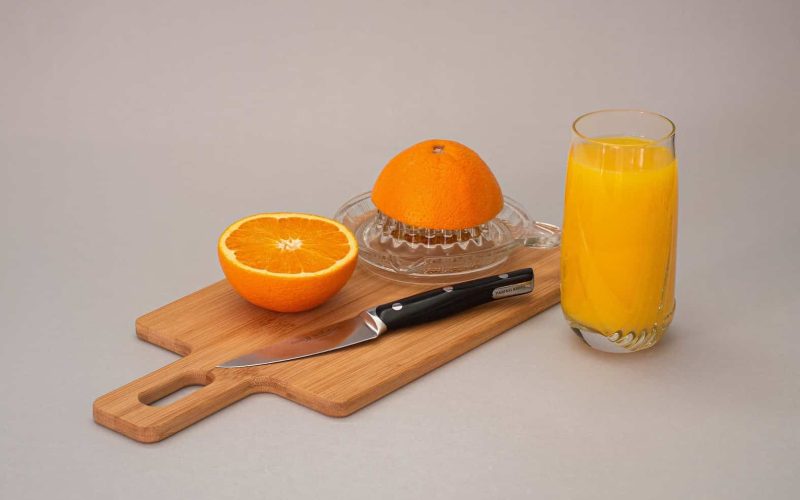Juicing has become a popular way to consume fruits and vegetables, but with so many different types of juicers on the market, it can be difficult to decide which one is right for you.
This article will explore the different types of juicers, including centrifugal, masticating, and twin gear, and their unique features and benefits for extracting juice from fruits and vegetables.
Making juice from fruits and vegetables is a fantastic way for people who don’t like to eat their fruits and vegetables to receive many nutritional benefits still.
Juicers come in various styles because they can handle a variety of raw materials, including carrots, apples, berries, and leafy greens, that vary in hardness and consistency.
Knowing what you want to juice will go a long way toward guiding you toward the best machine.
This is a great place to start when making a purchase. From this point, you can research specific models and manufacturers while considering factors like warranties and electricity usage.
Here are the different types of juicers; let us get started.
Different Types of Juicers
Juicing has become a popular way to consume fruits and vegetables, as it allows you to extract the juice and consume many fruits and vegetables in a single glass.
Juicing also allows you to consume fruits and vegetables that you may not typically eat, such as kale, spinach, and beets.
However, with so many different types of juicers on the market, it can be difficult to decide which is right.
This article will explore the different types of juicers, including centrifugal, masticating, and twin gear, and their unique features and benefits for extracting juice from fruits and vegetables.
1. Centrifugal Juicer
Centrifugal juicers are the most common type, known for their speed and efficiency. They use a rapidly spinning basket to separate the juice from the pulp.
The high-speed spinning motion creates centrifugal force, which separates the juice from the pulp.
Centrifugal juicers are great for juicing hard fruits and vegetables, such as apples and carrots, and can juice large quantities of fruits and vegetables quickly.
However, they can be less efficient at juicing leafy greens and produce more heat and foam, which can affect the taste and nutritional value of the juice.
2. Masticating Juicer
Slow and Gentle Extraction Masticating juicers, also known as cold press or single gear juicers, work by crushing and grinding the fruits and vegetables to extract the juice.
The slow speed of the drill, which is the part of the juicer that crushes the fruits and vegetables, creates less heat and friction, which results in less foam and a higher yield of juice.
Masticating juicers are great for juicing leafy greens, such as kale and spinach, and fruits and vegetables with a high water content, such as cucumbers and watermelon.
You can also use them to make nut milk, baby food, and even pasta. This juicer is one of the different types of juicers.
3. Twin Gear Juicer
The Ultimate in Juice Quality and Nutrient Twin gear juicers, also known as triturating juicers, use two gears to crush and grind the fruits and vegetables to extract the juice.
The two gears work together to apply more pressure to the fruits and vegetables, resulting in a higher yield of juice and a higher nutritional value.
Twin gear juicers are great for juicing various fruits and vegetables, including leafy greens, hard fruits and vegetables, and fruits and vegetables with high water content.
You can also use them to make nut milk, baby food, and even pasta. However, twin-gear juicers are the most expensive type and can be difficult to clean.
4. Hand-Squeeze Juicer
Hand-squeeze juicers are referred to as the “ancient” form of juicing technology because they rely solely on your physical prowess.
It is a two-handled juicer that is constructed so that you place the fruit in a spot that is intended to hold it.
The juice will then leak out of the bottom holes as you push the handle toward one another. Although these types of juicers are very easy to clean, they are only good for citrus fruits like lemons.
But you can’t juice larger fruits with this one. In addition to being made of wood, steel, and plastic, they can also be found primarily in India.
5. Lever-Action Hand Juicer
Although the name may make it sound similar to the earlier one, this one is much more practical.
With the help of the hand-held lever with this juicer, you can place the fruit in it, depress the lever, and the juice will be ready in a matter of seconds.
The good news is that it requires little physical effort and, of course, no electricity. Additionally, the vertical design requires less space than electric juicers.
What we should have liked about it is that you can only make juice from lemon and various citrus fruit varieties. This juicer is one of the different types of juicers.
6. Hand-Held Juicer
This is the classic juicer you have seen for a long time. This juicer is among the least expensive and is also simple to clean.
The juice is extracted with the aid of a steel-made head. Cut the citrus in half, place it on the metal head, and squeeze while rotating.
Furthermore, these types of juicers have the disadvantage of requiring a lot of labor, which you might not enjoy. Therefore, the procedure will take a little while.
7. Hand-Crank Juicer
You need this if you want a flawless glass of juice without using an electric juicer. You can easily infer from the name “hand-crank” that the type of juicer uses a hand crank to turn a grinding column with teeth.
Place the fruit in this and turn the crank to extract the fruit’s juice. Unlike previously mentioned, this juicer can handle fruits larger than lemon and citrus.
The issue is that it could become clogged if you clean it sparingly. Pour the finished beverage into your preferred drinking glass, then relax and take a sip.
You’ll have a good time if you add lime to the rim and slap one of those umbrella things on it. This juicer is one of the different types of juicers.
8. Vertical Masticating Juicer
The name speaks for itself. Although it has a vertical structure, it is a masticating juicer. The best available technology is different, though.
It takes up less space on the countertop and can produce juice like a standard masticating juicer. Additionally, many of its models include a pulp collector, which minimizes the mess.
However, there is a drawback to this as well: once the pulp collector fills up, you’ll need to empty it frequently.
And no, you won’t have to limit yourself to citrus; you can try any available vegetable. You will need to cut them into smaller pieces, though, because of the small mouth it comes with.
9. Horizontal Masticating Juicer
It’s time to leave the world of manually operated juicers with the advent of masticating juicers. This kind of juicer is regarded as having one of the best juicing technologies.
The food is slowly chewed, and almost all juice is extracted. Therefore, there is no possibility that you will not receive the full nutritional value.
It doesn’t produce a lot of heat either, in contrast to conventional automatic juicers. Yes, they were somewhat pricey as well.
Furthermore, the horizontal juicer is one of the most popular masticating models. It is a typical horizontal-structured masticating juicer.
It can juice any fruit as well as any vegetable. The juicer has a small mouth that allows fruits to be placed inside.
Once the fruit is in, the internal mechanism crushes and squeezes it to fully extract the juice; however, it also occupies a disproportionate amount of space and lacks an attached pulp collector.
The good news is that it is a benefit of these types of juicers because it keeps the juicing continuous.
10. Steamer Juicer
It is better to choose a steamer juicer when the volume is the most important factor in a juicing device.
To break down the food and turn it into juice, it heats it in a sizable container.
Using heat, this juicer breaks the cells of the fruits and vegetables. However, doing so might compromise taste.
To make a nutritious and energizing beverage, mixing in a variety of grape and kale varieties is good. This is one of the different types of juicers.
11. Auger Juicers
From a functional standpoint, an auger juicer functions similarly to masticating juicers but uses an auger instead of a masticating blade.
The internal mechanism slowly crushes the inserted ingredients as it operates. The speed is slow, and consequently, so is the heat produced.
The single-auger juicer is the most prevalent of the various auger juicer types that you’ll encounter.
The name obviously shows that this one only has one auger. This kind is excellent for juicing leafy greens and wheatgrass.
Furthermore, The twin auger or twin gear juicer is another type. It is a “crusher” because it works best to chop tough fruits and vegetables.
The inserts slowly crush everything once they pass between the two columns. These types of juicers also come in two additional sub-types: horizontal and vertical.
Gravity is used in the vertical one, where food gets to the column more quickly and is quickly ground up. However, clearing them up can be a challenge.
On the other hand, the horizontal juicer is, in comparison, both simple to set up and simple to clean. As the benefit of “gravity” is lost, this type has a strong pulling ability.
12. Hydraulic Juicer
If you don’t want to waste electricity on juicing, hydraulic juicers can be used to their full potential.
This particular juicer operates by using a lever to press the fruit between two plates and extract the juice.
The issue with these juicers is that you must cut the fruits into pieces to extract the juice. In addition, the entire process takes some time.
However, it’s essential when juicing different varieties of carrots and other heavier vegetables.
13. Electric Hydraulic Juicer
You should buy this if you want a hydraulic juicer but want to skip the manual part. This kind of juicer operates the same, but it uses electricity.
But cleaning this one up is a little bit of a hassle. The working and fruit preparation procedures are otherwise the same as before.
Conclusion
In conclusion, each type of juicer has unique features and benefits, and your choice will depend on your personal needs and preferences.
Centrifugal juicers are great for those who want a quick and efficient way to juice hard fruits and vegetables.
Masticating juicers are great for those who want to juice leafy greens and a higher yield, and twin gear juicers are for those who want the highest quality juice and nutritional value.








